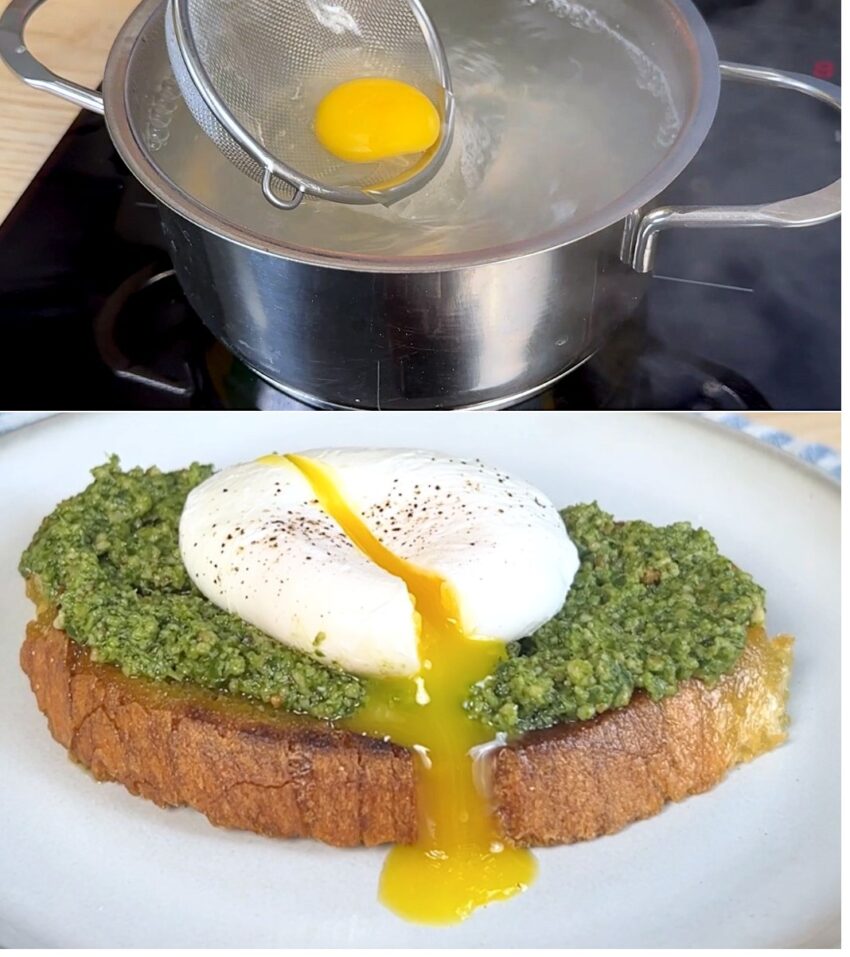Poaching eggs can be a bit tricky, but once you know the right technique, it becomes easy! A common mistake many people make is not having the water at the right temperature or not handling the eggs gently enough. Here are the most common mistakes people make with poached eggs—and how to fix them:
1. Not Using Fresh Eggs
- Mistake: Using eggs that aren’t fresh can result in poached eggs that spread out and look messy, rather than holding their shape.
- Solution: Always use fresh eggs. The fresher the egg, the better it will hold together while poaching. Fresh eggs have firmer whites that stay together better.
2. Water is Too Hot or Not Hot Enough
- Mistake: If the water is too hot, it will cause the eggs to break apart. If it’s not hot enough, the eggs will spread too much and won’t cook properly.
- Solution: The water should be at a gentle simmer—around 180°F to 190°F (82°C to 88°C). You should see small bubbles at the bottom of the pan, but the water shouldn’t be boiling. A gentle simmer allows the eggs to cook without becoming too bubbly and aggressive.
3. Not Creating a Whirlpool
- Mistake: Not swirling the water before adding the egg can lead to uneven cooking and a messier poached egg.
- Solution: Stir the water gently with a spoon to create a whirlpool effect. Once the water is swirling, gently slip the egg into the center of the vortex. This helps the egg white wrap around the yolk, keeping the shape tight and neat.
4. Cracking the Egg Directly into the Water
- Mistake: Cracking the egg directly into the pot can cause it to spread and result in a messy egg.
- Solution: Crack the egg into a small bowl or cup first. This allows you to gently slide the egg into the water, minimizing the mess and giving you more control over how the egg lands in the pot.
5. Overcrowding the Pot
- Mistake: Trying to poach too many eggs at once can lead to overcrowding, which can make the eggs stick together or become unevenly cooked.
- Solution: Poach eggs in batches—2 to 3 eggs at a time is usually a good number. This gives each egg enough space to cook properly and maintain its shape.
6. Not Timing It Right
- Mistake: Not giving the eggs enough time to cook will result in runny whites, while overcooking can lead to rubbery eggs.
- Solution: Poach the eggs for about 3-4 minutes for soft, runny yolks. If you prefer a firmer yolk, cook for 5-6 minutes. Use a timer to ensure consistency!
7. Skipping the Vinegar
- Mistake: Some people skip adding vinegar to the water, which can help the egg whites coagulate faster and keep them from spreading too much.
- Solution: Add a small splash (about 1 tablespoon) of white vinegar to the water. This helps the egg whites set more quickly and prevents them from floating all over the pot. Don’t worry, it won’t affect the taste of the egg!
8. Not Removing the Egg Properly
- Mistake: Not using the right tool to remove the egg from the water can cause it to break or lose shape.
- Solution: Use a slotted spoon to gently lift the poached egg out of the water. Be sure to gently shake off excess water by holding the spoon over the pot or a paper towel to dry the egg before serving.
With these tips, you’ll have perfectly poached eggs every time—no more mess or mistakes! Would you like a detailed step-by-step guide on poaching eggs, or tips for serving them?
